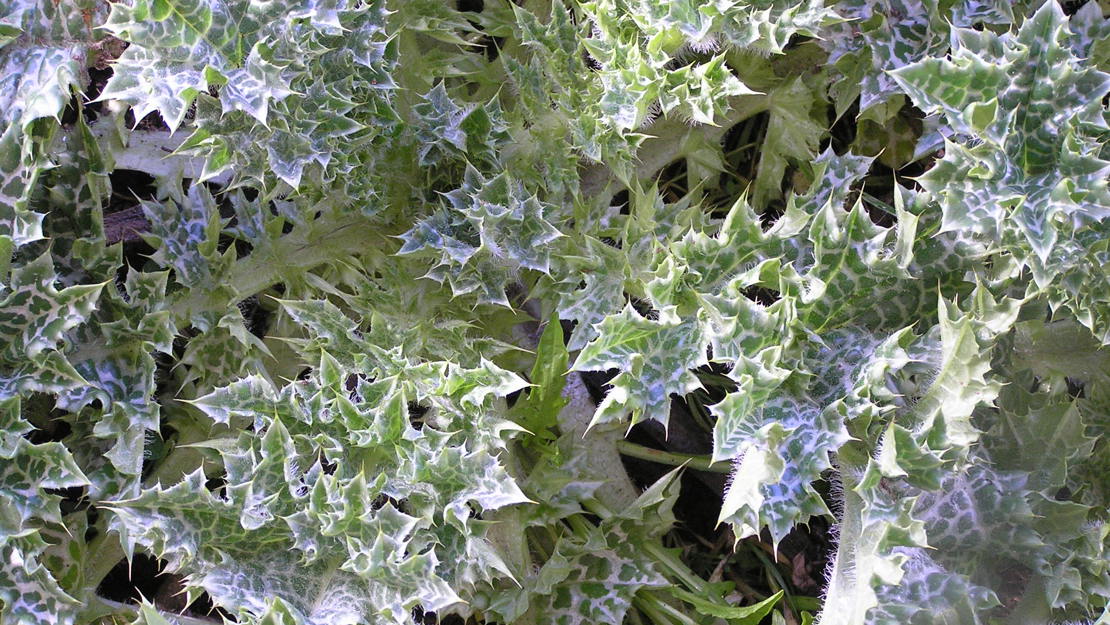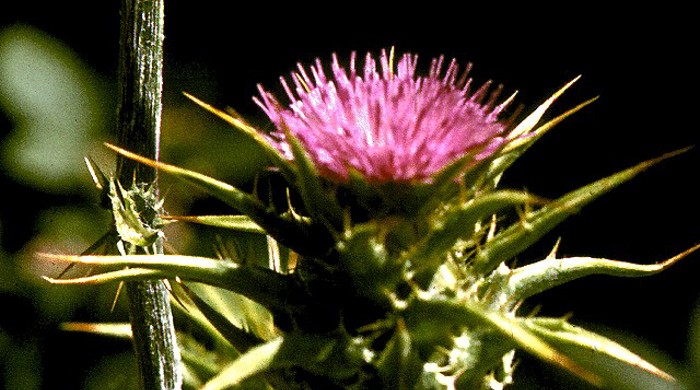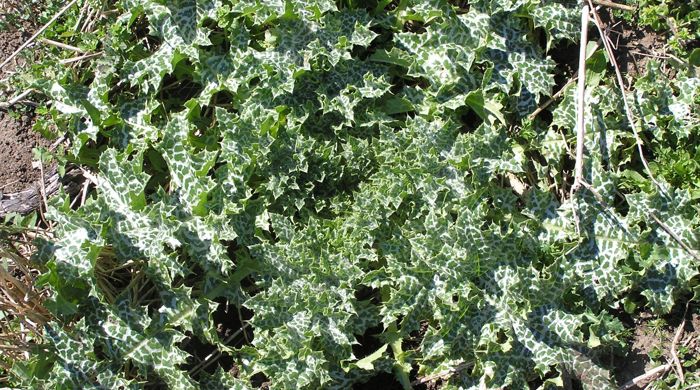Silybum marianum
Variegated thistle
Also known as:
Milk thistle
Family: Asteraceae
Origin: Europe, Mediterranean

Regional Pest Management Plan (RPMP) status
- Hauraki Gulf Controlled Area Notice pest
- Whole region — Sustained control
General description
Large annual or biennial prickly thistle < 2.5 m tall and < 2 m in diameter. Leaves are variegated, with white veins and blotches. Flowers are purple, surrounded by spines and borne in late spring – summer. Achenes bear pappus and ripen in summer – autumn.
What you need to know
To help protect our environment:
- you must not breed, distribute, release or sell variegated thistle within the Auckland region
- you must not plant variegated thistle within the Auckland region
- you must destroy any variegated thistle plants on land that you occupy.
Habitats
Pasture, croplands, river flats, roadsides.
Dispersal
Seeds dispersed by wind and contaminated soil, machinery and animals.
Impact on environment
Competes with valued pasture plants. Can be toxic to livestock.
Control
Site management
Maintaining good pasture cover can prevent establishment or suppress an infestation. Prevent overgrazing especially in summer. Other herbicides are available for selective use in pasture.
Recommended approaches
Physical control
Method: Dig or grub out at least the first 5cm of taproot.
Plant parts requiring disposal: Seeds.
Disposal options: Remove to greenwaste or landfill if practical.
Biocontrol
Biocontrol is currently not available for this species.
Community agrichemical control recommendations
No qualifications: Foliar spray with 100ml glyphosate green per 10L of water.
Certified Handler/Experienced agrichemical user: Foliar spray with 100ml glyphosate green per 10L of water and 20ml penetrant.
Safety notes
Plant has spines.
Caution: When using any herbicide or pesticide please read the label thoroughly to ensure that all instructions and safety requirements are followed.





